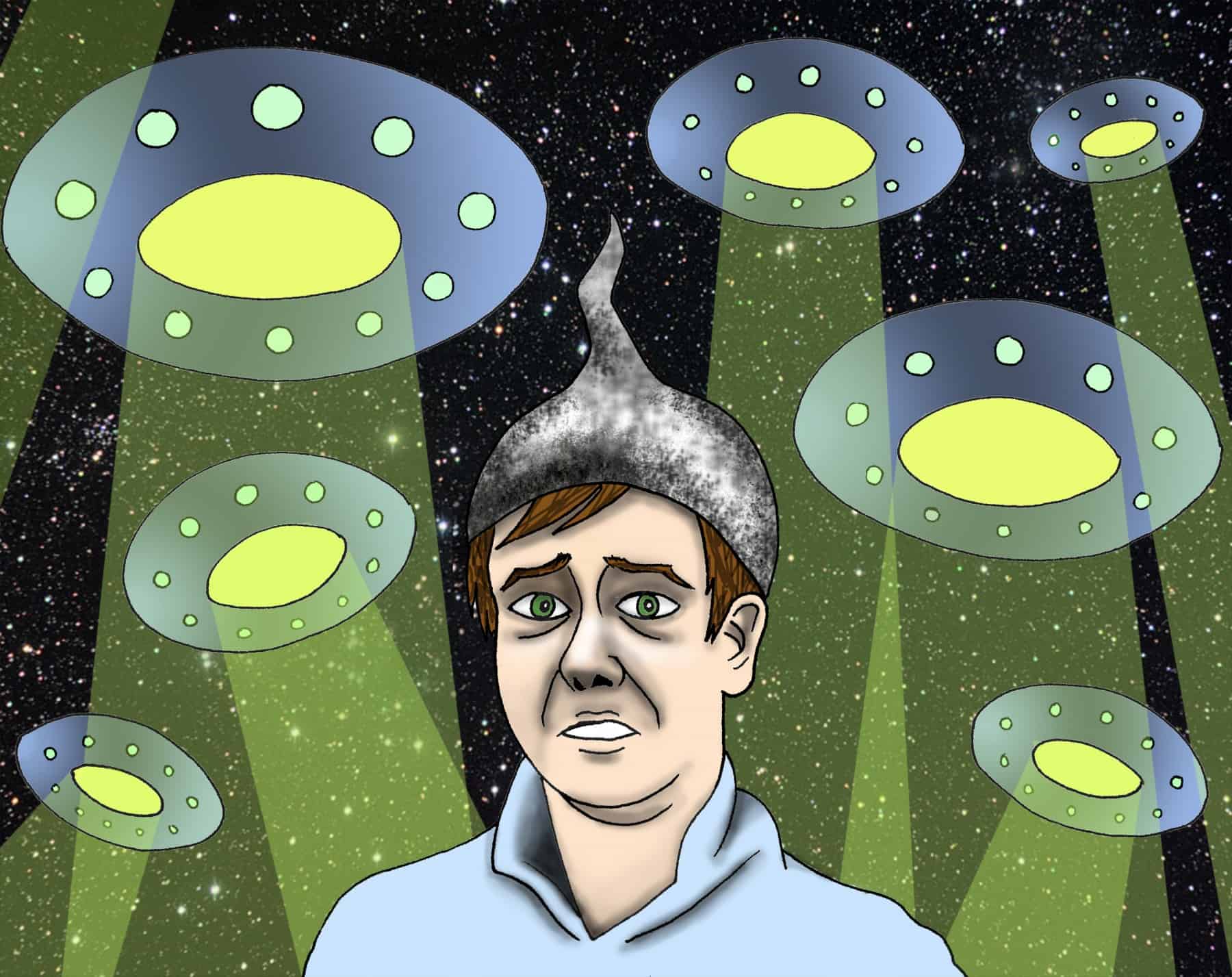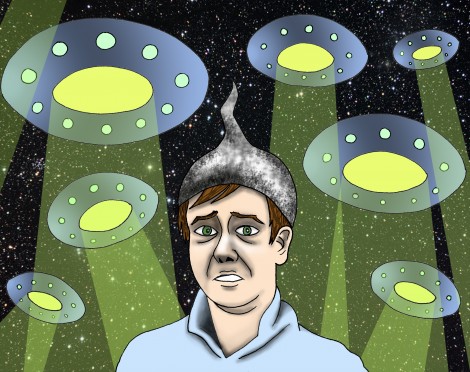In a small, dark room, a mysterious, shadowy elite gathers to decide the fate of the world. This elite has been plotting for centuries and has had membership in all of the world’s most powerful organizations, such as the Knights Templar, the Rosicrucians, the Freemasons, the Illuminati, Opus Dei, the Bilderberg Group, the Council of Foreign Relations, the World Trade Organization, and even the United Nations. They have caused wars, revolutions, diseases, general social upheaval, and even natural disasters, all for the purpose of creating a New World Order. This New World Order will have a single world government, a single currency, horde all of the world’s wealth and resources, stamp out constitutional rights and individual freedoms, and keep us all as brainwashed slaves on a dark, depressing prison planet. At least that’s what a conspiracy theorist would have you believe.
This lurid description captures the underlying beliefs of most conspiracy theorists. The names and organizations might change, but the goal — total world domination — and those plotting it — an evil shadowy elite — always remain the same. National Post editor and columnist Jonathan Kay identifies five key elements of conspiracy theories in his excellent survey of the contemporary conspiracist underground, Among the Truthers. These elements are 1) singularity, a single power that controls the events of history; 2) boundless evil; 3) incumbency; 4) greed; and 5) hypercompetence, the ability to manipulate people and events at will. Kay’s book mostly focuses on the 9/11 Truther movement, but also shows how these five elements continually show up in speculations about US president Barack Obama’s country of birth, the JFK assassination, and even alternative medicinal practices.
Conspiracy theories have a long history, tracing their way back to the French Revolution. In 1803, Abbe Barruel’s Memoirs, Illustrating the History of Jacobinism blamed the Illuminati, an organization founded in 1776 by Bavarian law professor Adam Weishaupt, for starting the revolution. Since then, many of the world’s great wars and disasters have been laid at their feet. However, the actual history of the Illuminati is much quieter. The Illuminati was a social libertarian organization dedicated to freeing its members from political and religious oppression. The organization was eventually dissolved in 1787. However, it keeps on being resurrected and blamed for the world’s problems. Even Dan Brown couldn’t resist including them in his terrible novel, Angels and Demons.
While it can be easy to laugh off conspiracy theories about Freemasons building a secret entrance for lizard people at the Denver airport, the consequences of intense conspiracism are not so funny. One of the most successful conspiracy theories of all time was the Protocols of the Elders of Zion, a terrible anti-Semitic forgery produced in the early 20th century that supposedly detailed a Jewish plot to dominate the world. This document contributed to the strengthening of anti-Semitism in North America and Europe and has sadly gone on to become the blueprint for most contemporary conspiracy theories, even if these theories are not themselves anti-Semitic. Timothy McVeigh, the Oklahoma City bomber, was a conspiracy theorist who believed blowing up the Alfred P. Murrah building would be the first strike against the New World Order.
Jonathan Kay identifies a much greater threat. He argues a “cognitive rift” is developing between those who are conspiracists and those who are not, and this is unhealthy for a democracy that requires some level of trust from its citizens. Conspiracists only surf websites or read books that confirm their strongly-held beliefs. As Kay documents extensively, conspiracists who are challenged on their beliefs will just include your challenges as a part of the conspiracy. Why are conspiracy beliefs so pathological? Political scientist Michael Barkun argues that conspiracy theorists use “stigmatized knowledge claims” which are essentially claims that are marginalized by traditional knowledge establishments such as educational institutions and the media. The conspiracist’s marginalization only strengthens his or her belief that he or she has found the truth.
So how do you protect yourself from conspiracy theories? Some education in practical reasoning would be a great help as this would enable you to detect fallacies and assess the strength of arguments. For example, all conspiracy theories commit two common fallacies. The first is confirmation bias. Conspiracists conclude that the official story about 9/11 cannot be correct and then proceed to find only those pieces of evidence that support their conclusion, ignoring the overwhelming amount of evidence that demonstrates that they’re wrong. The other common mistake in reasoning is the post hoc fallacy. This fallacy is named after the Latin phrase “post hoc ergo propter hoc” — after this, therefore because of this. A 9/11 Truther will point to the recent invasions of Afghanistan and Iraq as proof that the US government must have blown up the World Trade Center even though 15 of the 19 hijackers were from Saudi Arabia.
Reading books about the nature of conspiracist thought — how it develops, its basic structure, its long, disturbing history — will provide further defenses against conspiracist thinking. My personal favourite is Michael Barkun’s A Culture of Conspiracy. This academic study of American conspiracy theories not only provides an excellent overview of the structure of conspiracist thought but also delves into the history and origin of every modern conspiracy theory. Jonathan Kay’s Among the Truthers is also an excellent resource for understanding today’s conspiracy movements and has some interesting suggestions about how we could fight conspiracism. Another good book is Jason Colavito’s The Cult of Alien Gods, which convincingly demonstrates how horror author H.P. Lovecraft inadvertently influenced contemporary UFO pop culture (and proceeds to debunk numerous claims made by alternative archaeologists and ancient alien theorists). Conveniently, all of these books can be found at Robarts.
So remember, dear readers, the truth is out there. But it doesn’t involve aliens, government agents, evil geniuses, chem-trails, or secret societies. Sorry to disappoint you.



